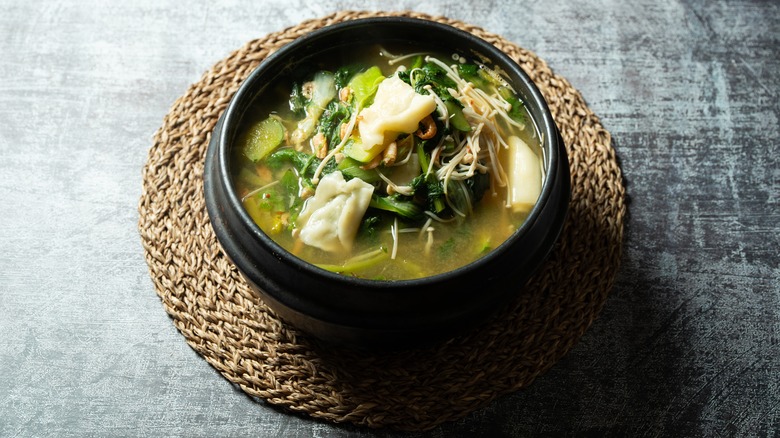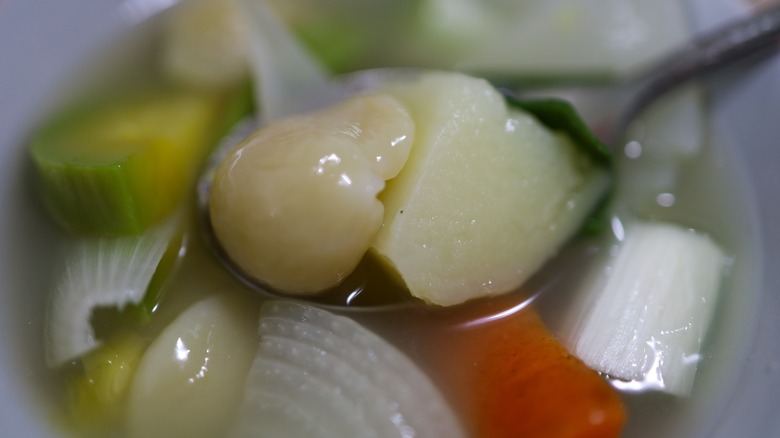Sujebi Is The Korean Hand-Torn Noodle Soup You Should Know
A pot of Korean soup steaming hot off the stove is sometimes just the right fix for those days when you need a little warmth and comfort. A very popular dish that many turn to is kimchi sundubu jjigae (Korean tofu stew), which perfectly embodies the flavor intricacies of Korean cuisine. However, if you're in the mood to try out something slightly less common, give sujebi a try.
Also known as hand-torn noodle soup, this dish consists of noodles made from pulled flour dough and a wide selection of vegetables all cooked in an anchovy-based broth. The noodles offer a soft taste and chewy, pillowy texture that absorbs the overall umami goodness so well. Each spoonful is packed with a tenderness that's light enough for you to savor every flavor note.
Originally, it was considered to be a specialty made for banquets and other celebrations since wheat flour was such a commodity. Over time, however, it has gradually made its way into regular household meals and become a cherished comfort food that anyone can enjoy.
What amazing things does sujebi have to offer?
This dish's outstanding feature is obviously the noodle. Not only is it a delight to eat but it's also a lot of fun to create. Start by making the dough from flour, salt, and water and knead until it reaches a desired level of smoothness and elasticity. Then, roll to flatten it and tear it into thin, bite-sized pieces. The size and shape are entirely up to you, so there are no constraints or rules to follow, which makes for a carefree, easy process.
Although simple at first glance, sujebi is a dish with quite a lot of potential. Its light, subtle taste is a perfect canvas for various additions. When simmering the broth, you can add some dried kelp to give it a more authentic, deeply umami taste. If you just want a minor, foolproof touch to make it more flavorful, Asian condiments like soy sauce, fish sauce, or hoisin sauce should suffice. For those who are a fan of classic Korean food heat, gochujang, pepper paste, kimchi, or diced chilis can add intense, spicy flavors.
While not compulsory, proteins like shrimp, clams, or beef are great for inducing an extra chewy texture and depth to the soup. You can also branch out with veggies. Mushrooms, potatoes, radishes, and zucchini are common choices, but others like leafy greens or seaweeds are just as good.

